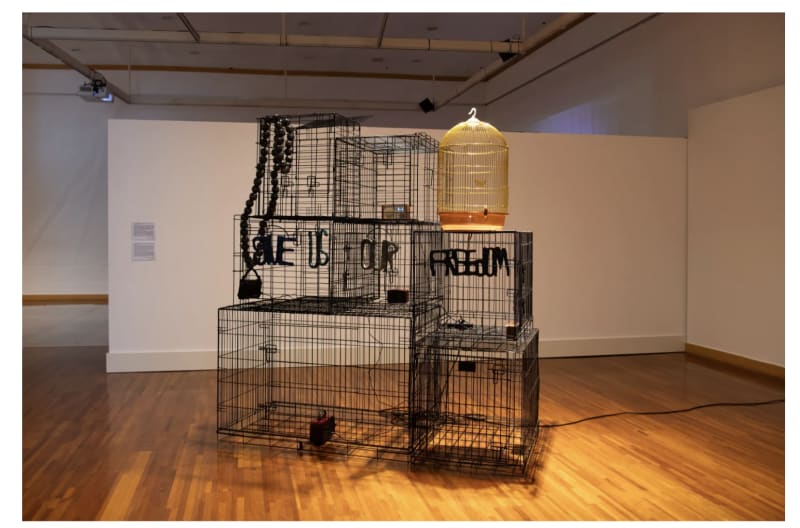The Gwangju Biennale in South Korea, Asia’s oldest Biennial, was founded in 1995 to honor the spirit of the 1980 civil uprising. This political legacy that fueled its genesis remains central to both the main exhibition and the national pavilions. This year, the Biennale expanded to include thirty-two countries, with the U.S. participating for the first time.
The debut American pavilion, organized by the Asian Art Museum of San Francisco, is curated by Abby Chen and Naz Cuguoglu —”two immigrant curators representing a nation of immigrants,” as Chen put it. As they installed the exhibition, which opened on September 5, Observer spoke with them about the curatorial approach they chose for this historic U.S. debut.
Titled “Rhythmic Vibrations,” the pavilion, Abby Chen told Observer, “historicizes and depoliticizes the idea of who gets to make the American Pavilion, who gets to speak for that country, and what it means to hold this power.” In recent years, the concept of national pavilions has come under scrutiny, seen as an outdated model that celebrates nationalistic ambitions. This becomes especially complicated in a country like the U.S., where diverse ethnicities, cultures and migration histories intersect.
“When we were invited to curate the American Pavilion, Abby Chen and I were very aware of our position to ‘represent America,'” said Naz Cuguoglu. “What does that even mean? In Biennales, nations compete with each other. We were critical of this and conscious of our role as two immigrant women invited to curate this project. I’m still applying for my green card, you know.”
Originally from Turkey, Cuguoglu emphasized that the pavilion and the museum aim to present a broader view of Asia and its diversity. “When people think about Asia, they still often think of East Asia—China and Japan. But here, we also feature artists from Afghanistan, Iran, Hong Kong, and Taiwan, covering different regions of this vast continent. While it’s impossible to represent all voices, we strive to represent as many as possible.”
The exhibition brings together artists from Asia, Asian America and the Asian diaspora. “We are looking across Asia, with a particular focus on women and queer artists,” Cuguoglu adds. This diversity of voices is what inspired the title “Rhythmic Vibrations..."
Elisa Carollo


